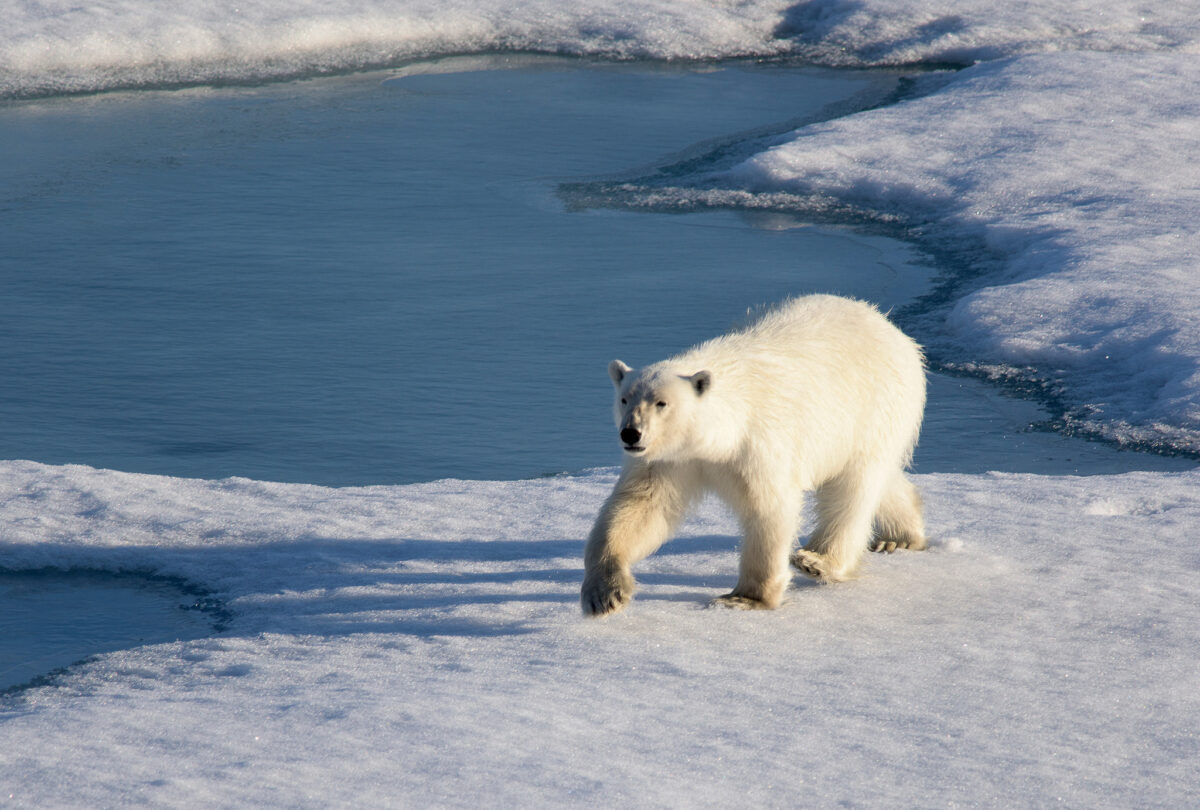A ten-year study of Chukchi polar bears, conducted from 2008 to 2018, found more bears than expected — and healthy ones, too. That’s despite sea ice loss in the Bering and Chukchi Seas. But that doesn’t mean the bears aren’t changing their habits.
Ryan Wilson of the U.S. Fish and Wildlife Service is part of a group that studied bears in the Chukchi Sea, just off the Lisburne peninsula.
“Physiologically and physically, we haven’t really seen any signs yet that bears in the Chukchi are experiencing negative effects of sea ice loss, but that’s not to say we’re not seeing changes in behavior and distribution as it relates to sea ice loss.”
In fact, the bears seemed to be doing well and had healthy body weights, with some bears weighing more than the average 20 years ago. Wilson says samples of hair, fat, and blood revealed that Chukchi polars are much less likely to be fasting than their counterparts in the Southern Beaufort Sea. That means they’re finding plenty to eat.
Their findings estimate that there are about 3,000 polar bears in the Chukchi Sea. Previously, that number was believed to be closer to 2,000.
That increases the sustainable harvest number to 85 bears, which is good news for subsistence hunters. That number is shared between Russian and American harvests.
Nonetheless, hunting the bears could get difficult for Alaskans. Wilson says that with a shorter sea ice extent, the bears aren’t coming to the coasts of Western Alaska much.
“They’d be much better off just sticking on the ice and having the opportunity to hunt, so now, when they are coming on shore, it’s on the coast of Russia and Wrangell Island.”
And while the tagged bears were healthy, Wilson says their movement and lifestyle patterns are changing.
“They’re spending up to a month longer on shore, which isn’t good. Because basically, when they’re onshore, unless some whale washes up, they’re having to fast for that period of time. They’re mostly resting and not feeding while they’re on land.”
Twice as many females are now summering on shore: 39% compared to 20% in the 1980s. Wilson says that is especially problematic for pregnant females, who would increasingly be spending time away from their food source before they den with their new cubs in the winter.
But the ice coverage in the research area has gotten worse. So, while it changes where the bears decide to go, it also impacts how humans are able to study them.
“I’m not sure what fieldwork looks like in the future in the Chukchi Sea, if it’s going to be having to sample wherever the ice is in that given year. But regardless, it’s not going to look the same. It’s going to require a lot more outreach and discussions with the communities to figure out how, or if, it might work with their subsistence activities.”
Wilson says the research team is taking the next year off, partially to figure out how to move forward with the changing conditions.
There was no mention of a date for further study of the bears, but Wilson mentioned that data and samples (like hair and teeth or skull dimensions) collected by subsistence hunters continues to be useful for research.
Image at top: photo: Christopher Michel, via Flickr / Creative Commons.





